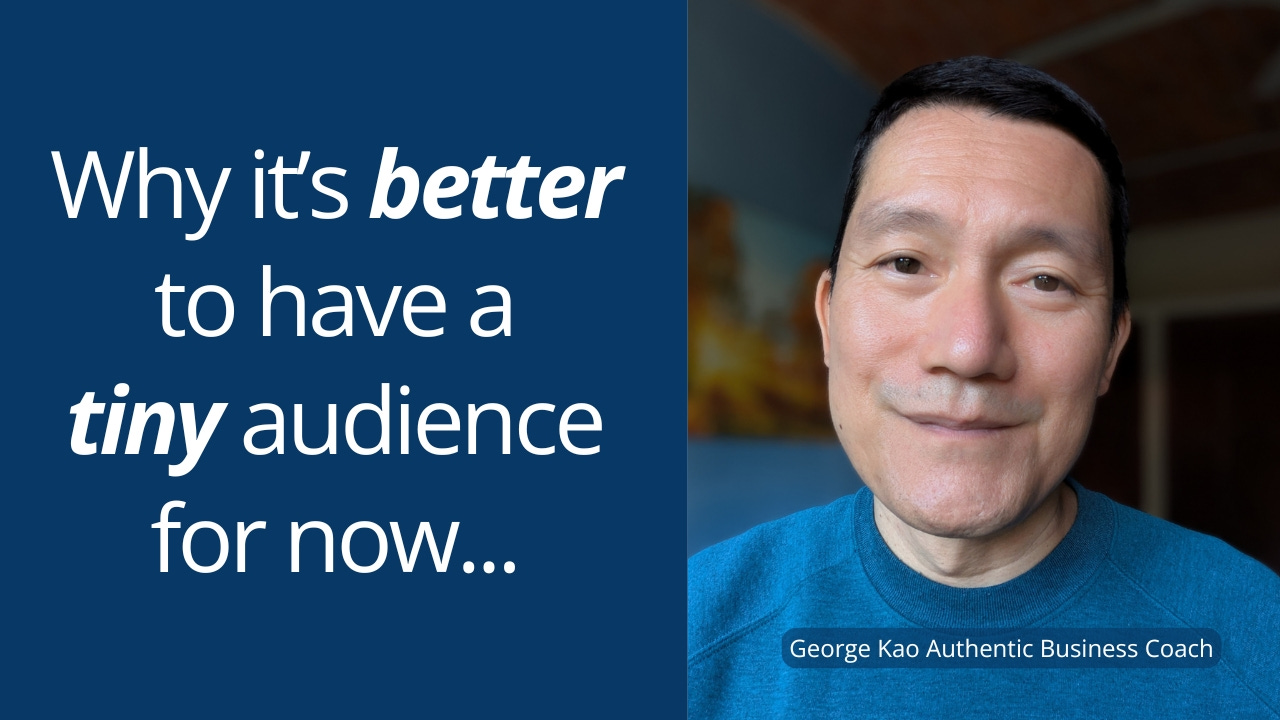Is it easier to publish content when you have a big audience, or a small one?
It might seem obvious that a big audience is easier… but what you read below might help you value the small audience you might have right now…
Years ago I went to a Robin Williams’ comedy event called “Raw” where he was testing out new material.
A big fan of his movies — I was very surprised that most of the jokes at the event were terrible. He was so un-funny!
Later I found out that this is how many comedians do it, including Richard Pryor and Chris Rock. These are called “work in progress” gigs. They test out new material in front of smaller live audiences (at a free or discounted rate) without really promoting the event. They can just do a light announcement on local radio and get a crowd there.
At the Robin Williams event I attended, there were maybe 250 in the audience. There were so many moments of clearly bad and cringe-worthy jokes. Can you imagine “failing” in front of so many people? I was genuinely embarrassed for him.
Yet, 250 people is a drop in the bucket compared to Williams’ usual audience of millions for his movies. It’s relative. Maybe your is a 25-person audience right now, compared to the thousands you’ll have in the (near) future.
Professional content creators, whether comedians or bloggers, know that we have to test our ideas in front of real audience members, even if it’s just a few people, to know if it’s going to work.
Of course, most of us aren’t famous enough to instantly gather a live crowd. But still, we can post on social media to see if our raw material gets even two positive reactions. And if it does, then it might be worth spending the energy to refine it further and promote it to the masses. I call this The 3 Stages of Content Creation.
I take my own content through multiple stages. First, I post some raw ideas to my X account — https://x.com/GeorgeKao/highlights — which gets very few views, compared to my other social accounts. This is why I like testing material there. Usually I don’t even get a single “like” there! Occasionally, a tweet of mine will get two likes, and when that happens, I put onto my Threads account — https://threads.net/geokao
Then, I take the best of my Threads account and expand each post into a blog post on my website (as well as placed onto Substack, LinkedIn, Medium), as well as made into a YouTube video.
Then the best of those go onto my Instagram — www.instagram.com/geokao — where I usually get a lot more engagement.
You don’t have to go through so many stages with your content. The point is to have somewhere you test new material, publicly or with a small group, before distributing it to more people.
Because I get almost no engagement on X (twitter), I feel more comfortable testing out new material there. What’s also nice with X is that all my ideas are time-stamped so that, if I later develop the idea further, I don’t have to worry about anyone thinking I stole it from them. I can always point them to the origin of the idea, with that older tweet.
(As for “my own” writings and ideas, I’ve placed it all in the Creative Commons, so you’re welcome to use or copy any of it! Read more: Why I don’t protect my writings.)
Honestly, don’t worry about people seeing your raw material. No one will remember your mediocre content. They will simply scroll on by. They’ll only remember the stuff you put out that really made an impact on them.
I find that it’s really important to keep the creativity muscle strong by creating and posting raw ideas every day, which I try to do on my X account. Daily (well, Monday through Friday) is a good rhythm to create because it’s simple (“have I done it today?”) and it grows our creativity and confidence faster than if we only practiced creating once a week.
Once you have a small audience, you could even test out your material by doing Live videos, for example on Facebook, Instagram, X, or Youtube. Probably a few of your fans will see it and can give you feedback instantly. If you’re shy about more people seeing it, simply delete the video afterwards, after you’ve gotten the live feedback that you need.
If you get little or no engagement with your post, simply reframe it as a temporary blessing — you have the freedom to experiment with publishing your ideas in relative obscurity, building your muscles of creativity and “public” expression… before you get famous ;-)
Once you have successfully gathered a regular audience, you might feel more shyer about testing raw material, knowing that you will be making a fool of yourself in front of all these people. Hopefully by then, you’ll have practiced creating and publishing so much that you’ve become strong — you’re no longer afraid of losing audience members.
Consistent practice of authentic expression brings grounded confidence.
Go and practice your experimental creativity publicly — daily if you can — but in front of the smallest audience possible first :)





Dance like no one is watching. Release your content like no one is watching too :)
And here's a funnier take on this phenomenon of publishing into the void: https://medium.com/doctor-funny/content-creators-achieve-enlightenment-after-rebranding-zero-views-as-sacred-digital-solitude-989b20f76819